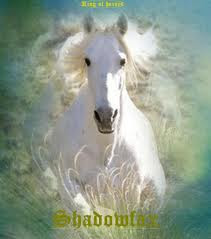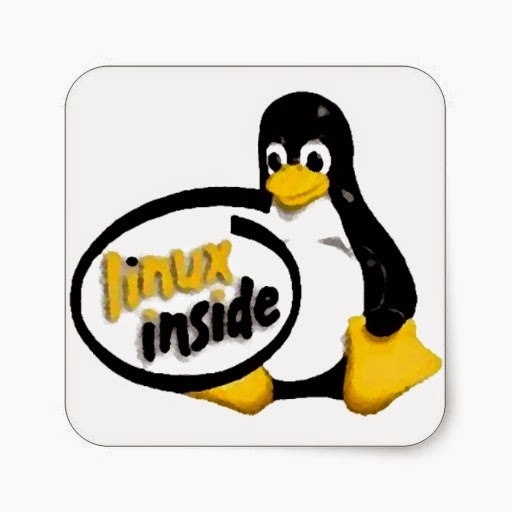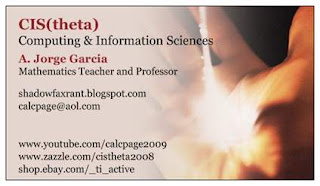How Do I Reach These Kids?
Over the past 35 years, I've tried everything I could think of to make learning fun in my classroom and encourage my students to succeed. I don't know if I want to get into every little gimmick, which ones worked and which ones didn't.
However, we as teachers all try to cultivate a culture of learning in our classrooms and I think I will list a few that have become traditions in my room for future reference.
Warning, some of these gimmicks tend to be on the geeky side 'cause, let's face it, I'm a bit of a geek! What follows is a list of the top 10 traditions, in no particular order, that seem to have a life of their own in my classroom in that they resurrect themselves year after year!
1) Ceremony Of The Seats
The first day of every quarter, even the very first day of school, in fact, starts with the Ceremony Of The Seats! Every single class that day starts with the students walking into a dark classroom. The only light source is the SmartBoard playing the original sound track from the film "A Beautiful Mind" that you hear playing above. Then I lead each student to their seat, one at a time, with my cellphone flashlight like an usher at a movie theater! OK, I'll admit to a little flair toward the dramatic. Instilling a little mystery and wonder in class never hurt anyone, say I!
Of course, Gracie is my greatest idol because she would always encourage everyone to do things their own way. What we would call "thinking outside the box" today was an everyday event for her. She even had an analog clock on her desk that ran counterclockwise just to show that you don't always have to do everything the same way everyone else does it. I suppose that she was akin to a modern day Henry David Thoreau following the beat of her own drum! For example, she would always say, and I'm paraphrasing, that "it's a lot easier to act first and ask for forgiveness later." In other words, asking for permission before you do something is just putting responsibility on someone else's shoulders. Be a leader! If you think there's a better way to do something, go ahead and do it! Stand up for what you believe! Have the courage of your convictions! That's how I got Linux into my classroom back in the 1990s when Linux first came out. I couldn't stand how programmer unfriendly our Windows OS and Novell Network was. So, one day, I just downloaded and installed Slackware Linux.
Here's my conversation with my boss the day after installation 24 years ago,
Boss: "Wait, that's not Windows, what is it?"
Me: "Right you are, it's Linux!"
Me: "I don't do Windows,
Me: "and neither does my maid!"
Boss: "Oh my, how much does it cost?"
Me: "I use FLOSS everyday!"
Me: "Free Linux Open Source Software."
Boss: "Aren't you breaking CopyRight law?"
Me: "Nope, it's CopyLefted!"
Boss: "We can't run that here!
Boss: "Who will maintain it?"
Me: "Well, I will, of course!"
Boss: "What a great idea!"
And it's been that way ever since .... except, last year, IT replaced all my Linux Partitions with WimpDoze!
Oh, one more thing: I name my Graphing Calculators after Science Fiction and Fantasy characters. See if you can name each TV show or movie:
So, how do you reach your kids? I hope I've inspired you to "think outside the box" yourself. Maybe I gave you a few ideas you can use in your classroom? Time to get creative with your kids. Go find the beat of your drum!
2) YouTube Wednesdays
Every Wednesday I show a short clip from YouTube that has at least something remotely to do with STEM in general or a recent lesson in particular. This started a few years ago when I played some FILKs related to Calculus. What's a FILK? It's a recognizable tune where the words have been changed to make fun of something or some sort of statement. As you can see above, I start the year with several FILKs by Tom Lehrer. Then I ease my way into documentaries about Admiral Grace Murray Hopper, then I get into NOVA episodes and the like! I start the year more or less the same way in every class. Then my Math and CompSci classes start watching different documentaries! This works well especially if you keep it short and have a brief class discussion afterward. I also have a ChromeCast running my playlists downstairs in our display case (with no sound so as not to bother nearby classes)! Of course, Gracie is my greatest idol because she would always encourage everyone to do things their own way. What we would call "thinking outside the box" today was an everyday event for her. She even had an analog clock on her desk that ran counterclockwise just to show that you don't always have to do everything the same way everyone else does it. I suppose that she was akin to a modern day Henry David Thoreau following the beat of her own drum! For example, she would always say, and I'm paraphrasing, that "it's a lot easier to act first and ask for forgiveness later." In other words, asking for permission before you do something is just putting responsibility on someone else's shoulders. Be a leader! If you think there's a better way to do something, go ahead and do it! Stand up for what you believe! Have the courage of your convictions! That's how I got Linux into my classroom back in the 1990s when Linux first came out. I couldn't stand how programmer unfriendly our Windows OS and Novell Network was. So, one day, I just downloaded and installed Slackware Linux.
Here's my conversation with my boss the day after installation 24 years ago,
Boss: "Wait, that's not Windows, what is it?"
Me: "Right you are, it's Linux!"
Me: "I don't do Windows,
Me: "and neither does my maid!"
Boss: "Oh my, how much does it cost?"
Me: "I use FLOSS everyday!"
Me: "Free Linux Open Source Software."
Boss: "Aren't you breaking CopyRight law?"
Me: "Nope, it's CopyLefted!"
Boss: "We can't run that here!
Boss: "Who will maintain it?"
Me: "Well, I will, of course!"
Boss: "What a great idea!"
And it's been that way ever since .... except, last year, IT replaced all my Linux Partitions with WimpDoze!
3) Hour Of Code
My 1999-2000 AP Computer Science class was cancelled due to low enrollment. Ever since then I take a day near Admiral Grace Murray Hopper's birthday (12/9/1906) to conduct an in-school field trip. This Field Trip is not for my own students. I try to get all the other Honors Math teachers on board and have them bring their classes to my room. If I have a lot of Juniors, I will also take a day to do this with my own students. Over the past few years my Field Trip has dove tailed with the Hour Of Code and CS ED Week. Here's a whole other blog post about what we do during the Hour Of Code. This year I'll be using some of the inspirational videos from code.org, but I will be doing my own presentations. My Math classes will be learning about SAGE. Each presentation will include something related to a current lesson as well as an introduction to python. I'll do a bit of Arithmetic, Algebra and Algorithms in each class. Then in Calculus we'll do some Riemann Sum Programs. In preCalculus we'll do some Scalar Dot Products and Resultant Vectors with graphs in 2D and Vector Cross Products with graphs in 3D. In AP Computer Science, I'll introduce Processing. With the Field Trip students we'll solve Quadratic Equations by coding in SAGE and Python.
4) preCalculus and Calculus Carols
Every class in December starts with a little caroling practice! These classes are our rehearsal for the day before XMas Break when we tour the school Caroling for whomever will listen. BTW, we have a preCalculus song book and a Calculus song book each with 12 songs we've collected over the years. Some are original compositions by my students. Some are stolen from the web. So, sue me! Last year we putt together an APCS song book based on Tom Lehrer lyrics!
5) Continental Mathematics League (CML)
CML is a competition a lot like Mathletes but is held in-house and there are several levels. My AP Calculus BC class competes in the Calculus League. There used to be a Computer Science League with AP Review styled questions, but that's over. There's basic Math and CS competitions for Elementary school students. We've participated in this competition for over 10 years. It's great practice for AB Calculus Exam level questions. There's 4 competitions: December, February, March and April. Each one can be done in a class period. The competitions have 6 short answer and 2 longer questions. The long questions are a lot like AP FRQs. The short qustions can be MCQs, T/F or Fill-in. I play classical or instrumental music in the background during quizzes and tests to help concentration. Each year we compete against about 100 schools. Most of these schools are in the USA, but some are International American High Schools. We usually place in the top 3-5 schools in our region that includes NY and NJ. We have our first meet November this year. Wish us luck!
6) CIS(theta) & NCSHS
I've been running a Computing Independent Study (CIS) course every year since 1995! Recent years have been focused on Parallel Computing setting up a cluster we like to call Shadowfax using MPI. First thing we used to do each year is reinstall our whole PC Lab Classroom with the latest version of Ubuntu Linux Desktop 64bit OS. Then we install the MPI compiler software stack. This year we'll have to figure out how to use WimpDoze instead. How about a Raspberry PI cluster? Then we figure out a project that needs all that computing power. In prior years we had 100 cores running at 50 GFLOP/s and we tried to make a Fractal Zoom Movie, but ran out of time. Let's see if we can do it this year. Next month we're gonna fire up the cluster for the first time with the Pelican HPC DVD! These students also usually join our chapter of the National Computer Science Honor Society (NCSHS) Zeta Omicron. We call our chapter Hopper-NY. BTW, the main reason for the existence of this blog is to keep a record of what my students do with Shadowfax in CIS.
7) Screencasting
Whenever I teach a new concept I record a ScreenCast on YouTube and link it to Edmodo or Google Classroom for my students' reference while doing homework. These ScreenCasts are also great for reviewing old topics as needed. Students find these videos useful when they miss class too! I've been ScreenCasting a new PlayList for one class every year since 2009! This blog came about in part to showcase my ScreenCasts. The sample ScreenCast above is a summary of what we did in AP Calculus BC class after AP Exam week last year as a final project. In my ScreenCasts, you see everything I write on my SmartBoard and you hear everything I say as I teach.
8) MCQ Mondays and FRQ Fridays
I've been doing MCQ Mondays and FRQ Fridays with my AP classes for some time now. This is the first year I'm doing so in all my classes! On Mondays, I take an old MCQ Exam (Alg2Trig Regents for preCalc, AB Calculus for BC Calc) and practice a few questions using Socrative. In preCalc this review is a great skill builder. Also, some of my preCalc students need to retake the NYS Regents Exam in January or are preparing for the SAT. In AP Calc, this review is great preparation for the AP Exam in May. I cover each MCQ Exam in about 3 weeks. That's 2 Mondays in a row that count as Formative Assessments. I give 15 minutes to try 10 questions, then we go over those 10 questions. On week 3, I give an actual MCQ Exam in class for a Quiz grade aka a Summative Assessment. On week 4 I return the Scantrons and review the last exam. I haven't started this process with the AP Computer Science students as yet since they need to get more content under their belts first! FRQ Fridays occur at the end of a unit. That Friday I give a preTest to review for the actual test. We go over the preTest in groups with WhiteBoards and then we present our work to the other groups! Then I give a Take Home Exam that's due on Take Home Tuesday the following week.
9) AP Week Movie Marathon
In my AP classes, we do a Movie Marathon after the AP Exams. We usually watch Math Movies. After the AP Exam Weeks are over, we alternate watching movies every other day. In between, we complete a final project. For example, last year we watched Proof, A Beautiful Mind, The Theory of Everything, The Imitation Game and The Man Who Knew Infinity.
10) SAGE & Processing Tuesdays
I've been using SAGE in class for years. Every Tuesday in Math class we use SAGE instead of a Graphing Calculator to do our work. Above, you can see one of my ScreenCasts using SAGE in PreCalculus. SAGE is a Computer Algebra System (CAS) that can do everything a Graphing Calculator can do plus it will do all your Arithmetic, Algebra, Geometry, Trigonometry and Calculus giving you exact answers in simplest form! You can even do 3D graphs from your browser on SAGE! In Computer Science class we use Processing on Tuesdays as well to make coding graphics and animations a snap! Oh, one more thing: I name my Graphing Calculators after Science Fiction and Fantasy characters. See if you can name each TV show or movie:
TI81 O B Wan
TI82 Klaatu
TI83 Ziggie
TI84 Frodo
TI85 Johnnie 5
TI86 Spock
TI89 Hal 9000
TI92 Colossus
TI200 Voyager
TI nSpire CX CAS Castiel
So, how do you reach your kids? I hope I've inspired you to "think outside the box" yourself. Maybe I gave you a few ideas you can use in your classroom? Time to get creative with your kids. Go find the beat of your drum!
Well, that's all folks!
Generally Speaking,
A. Jorge Garcia
Applied Math, Physics & CompSci

Applied Math, Physics & CompSci



















